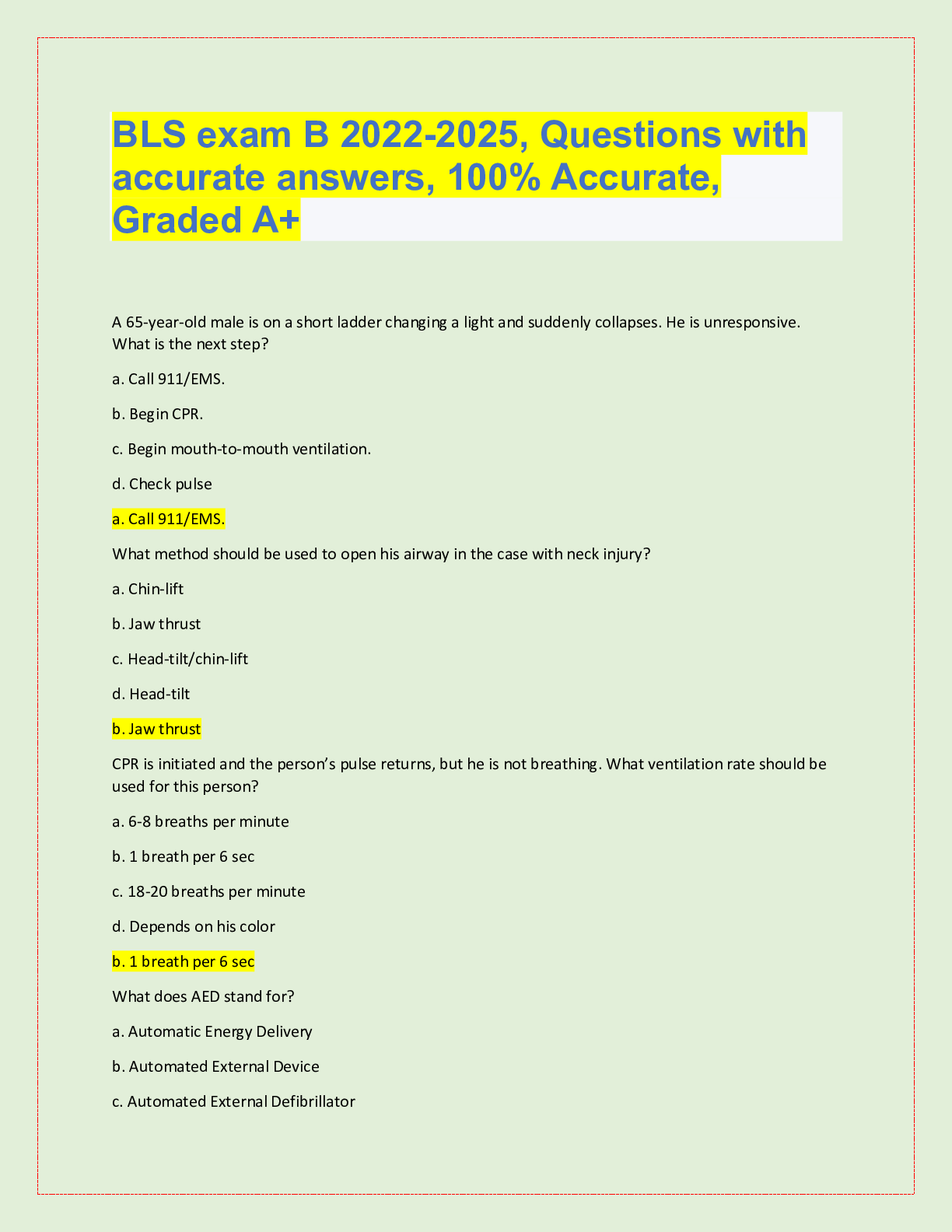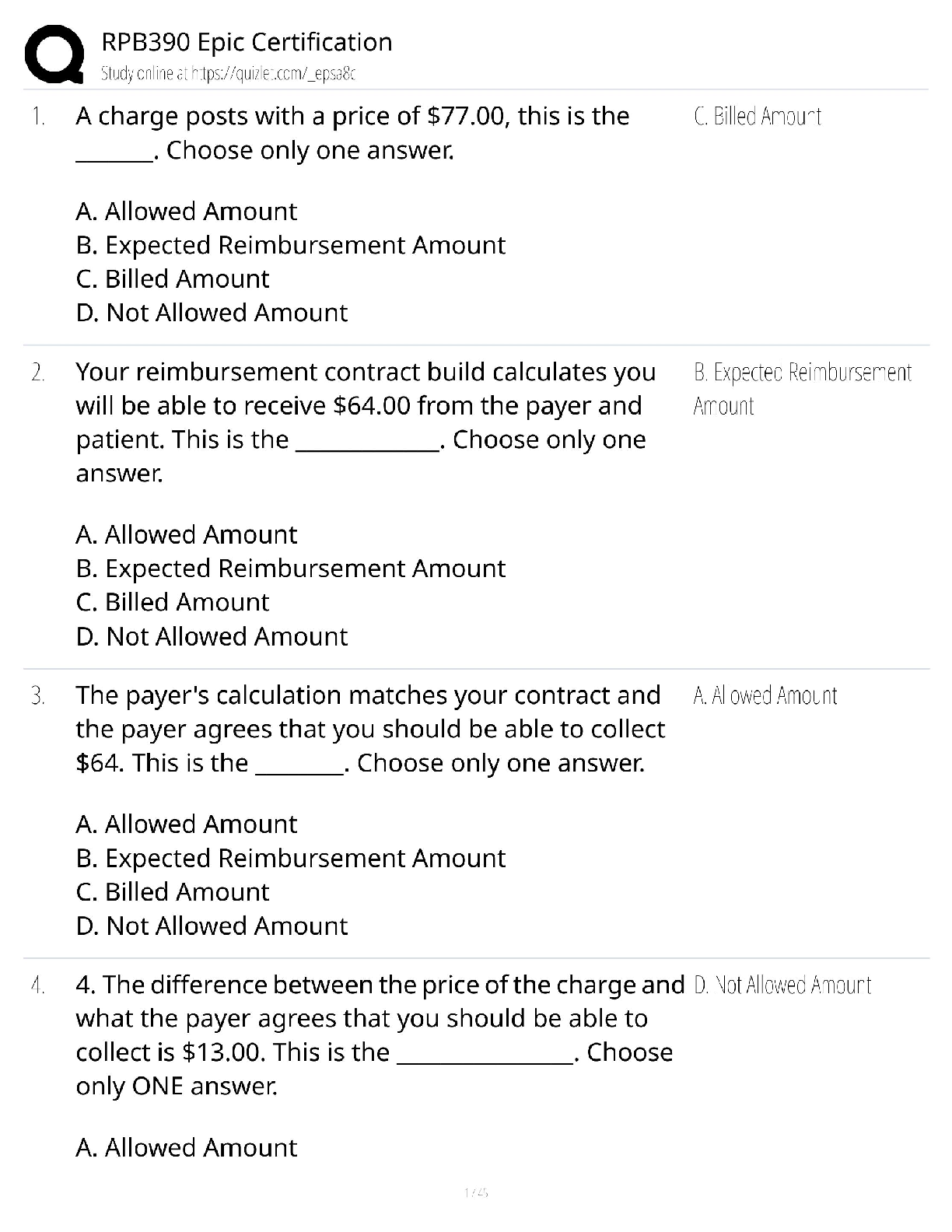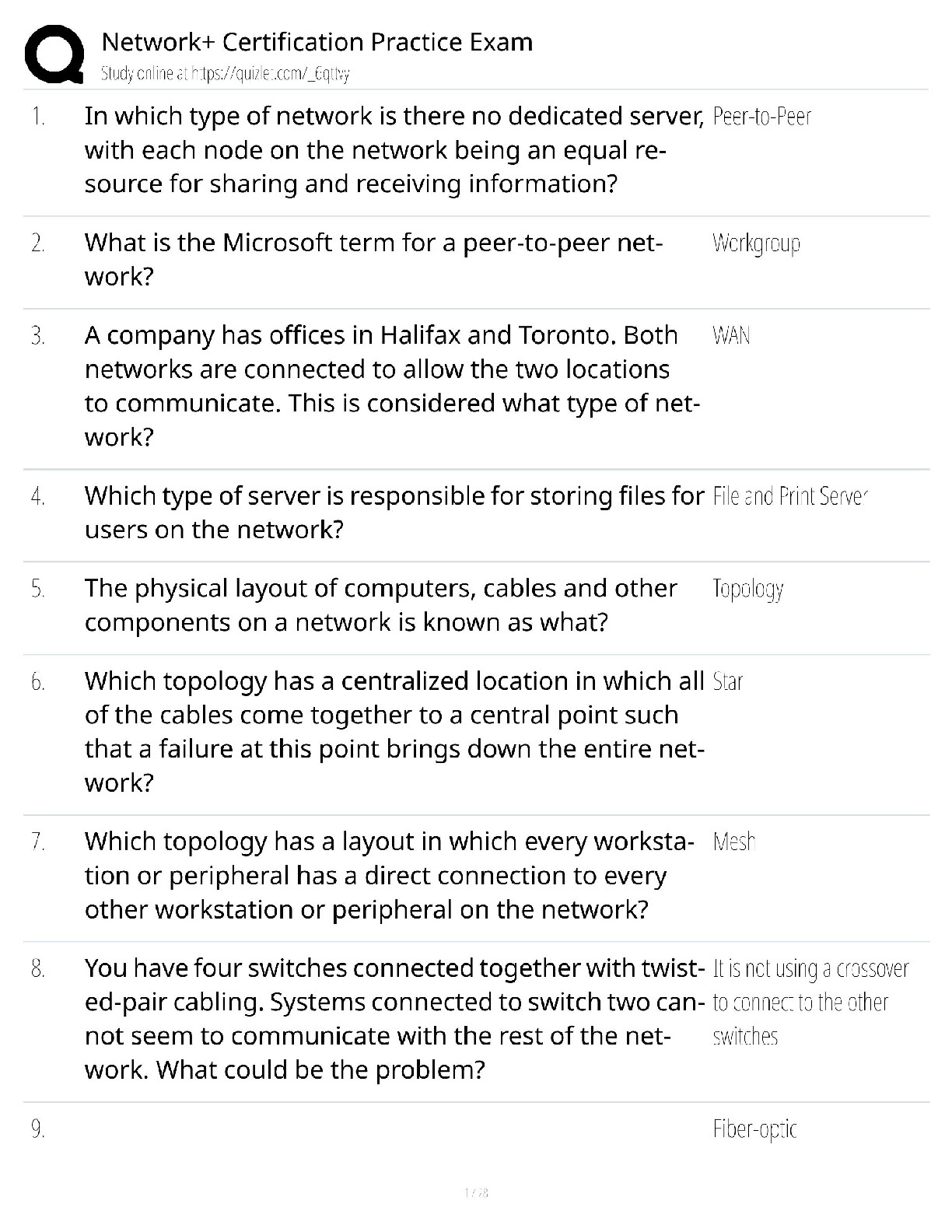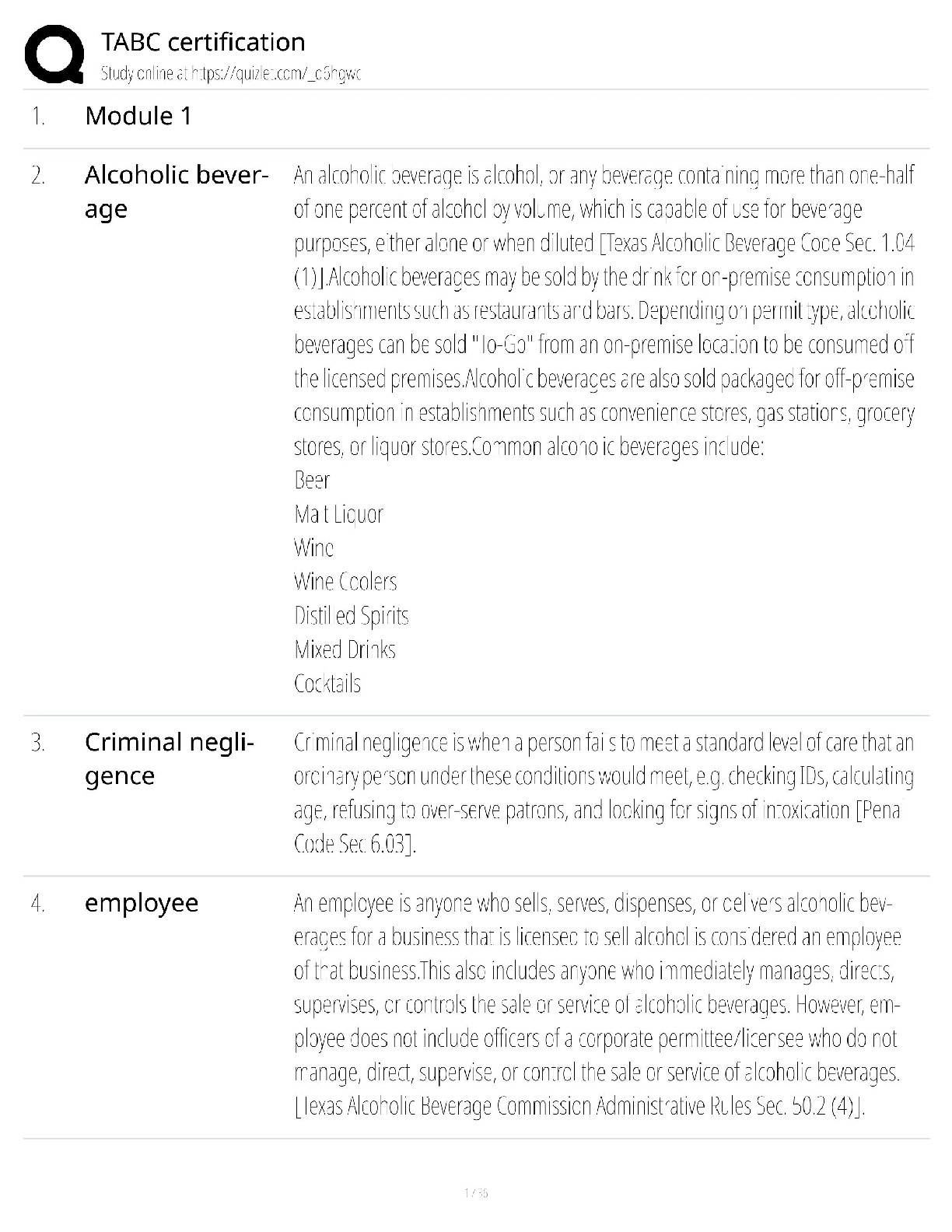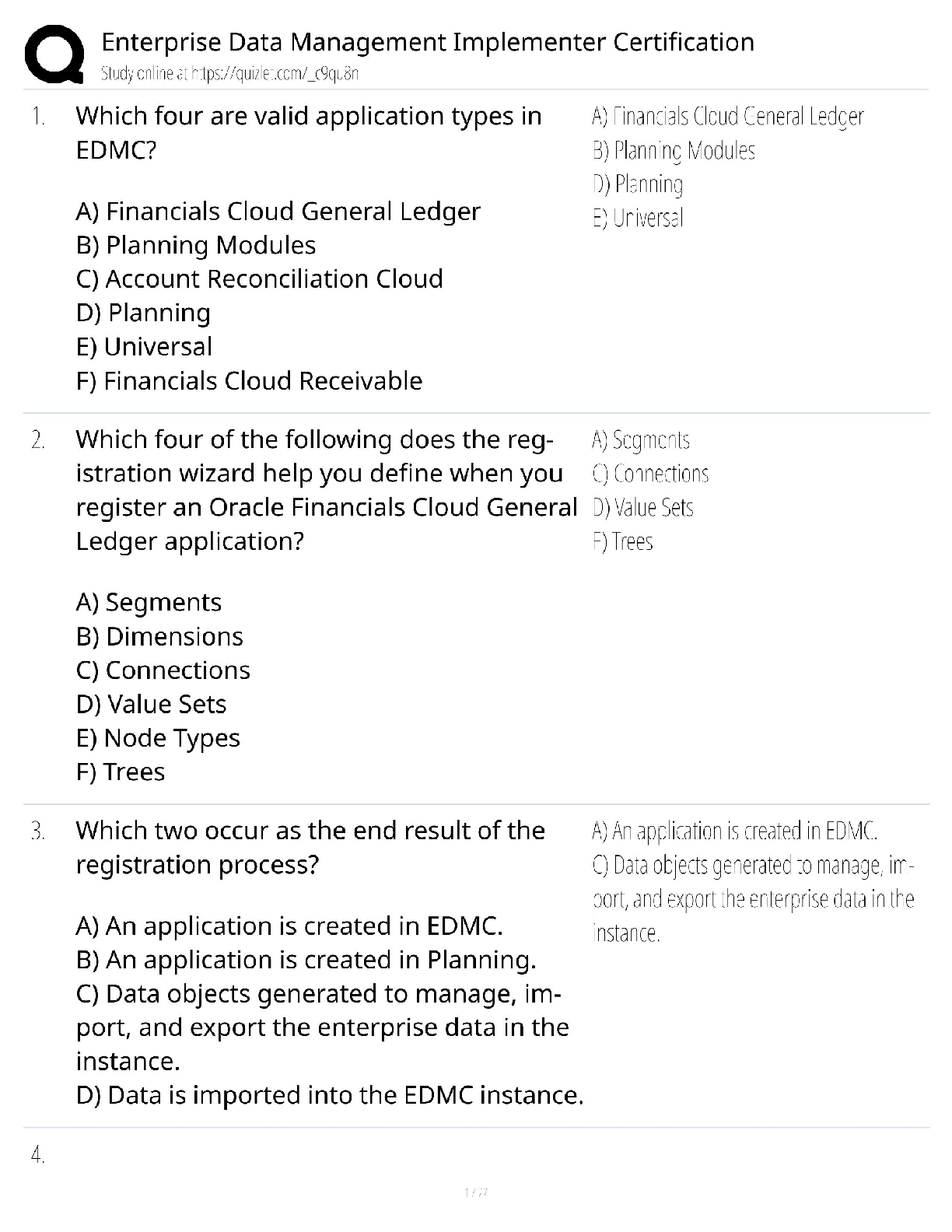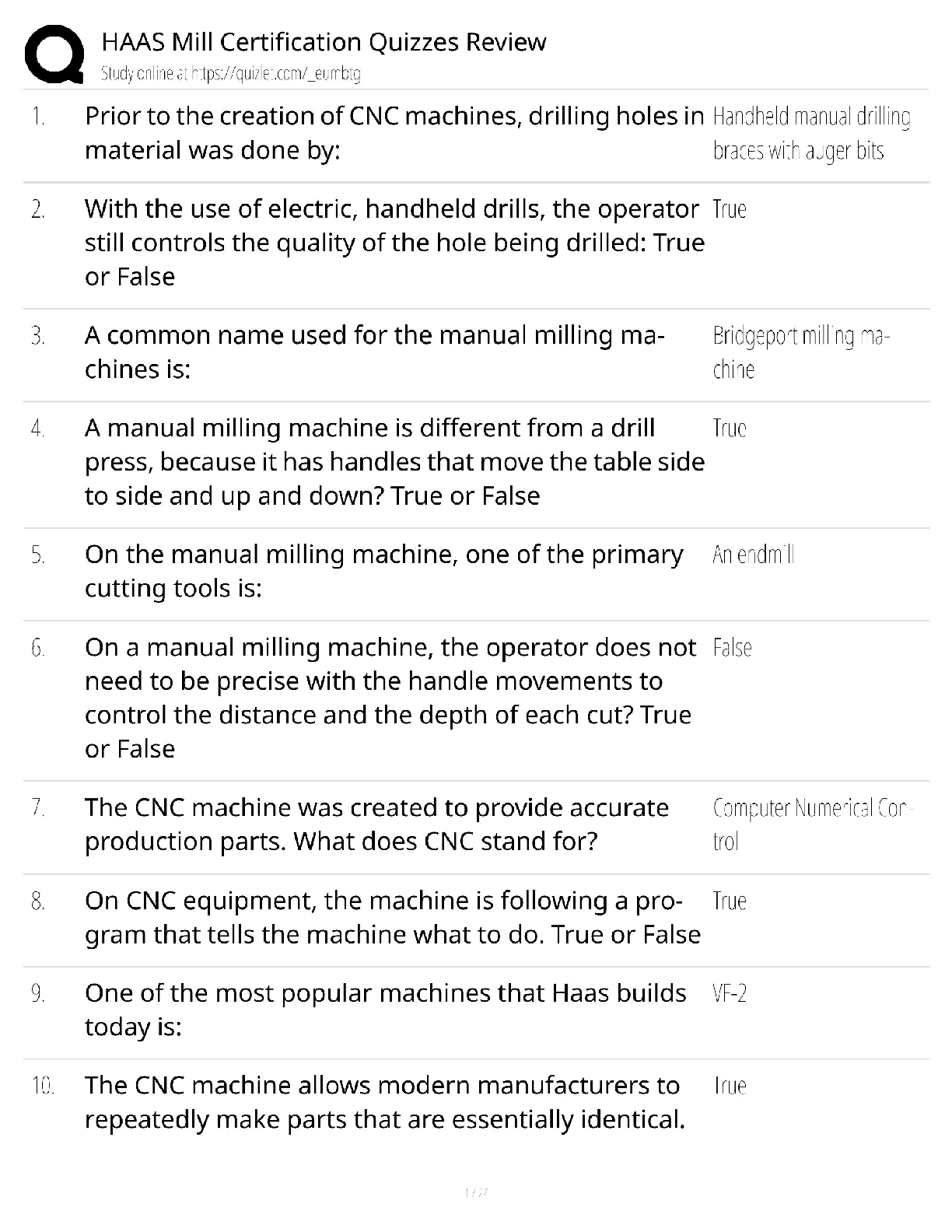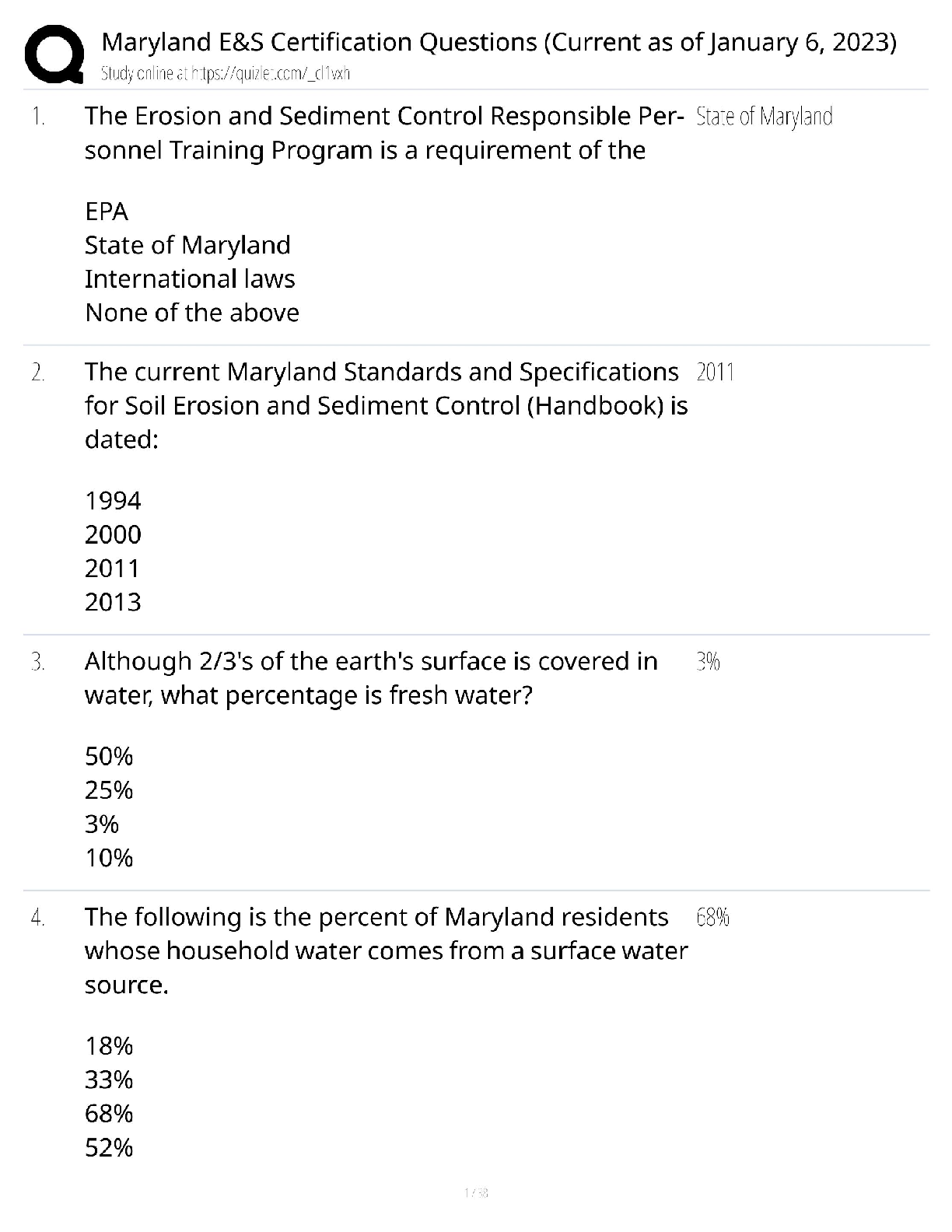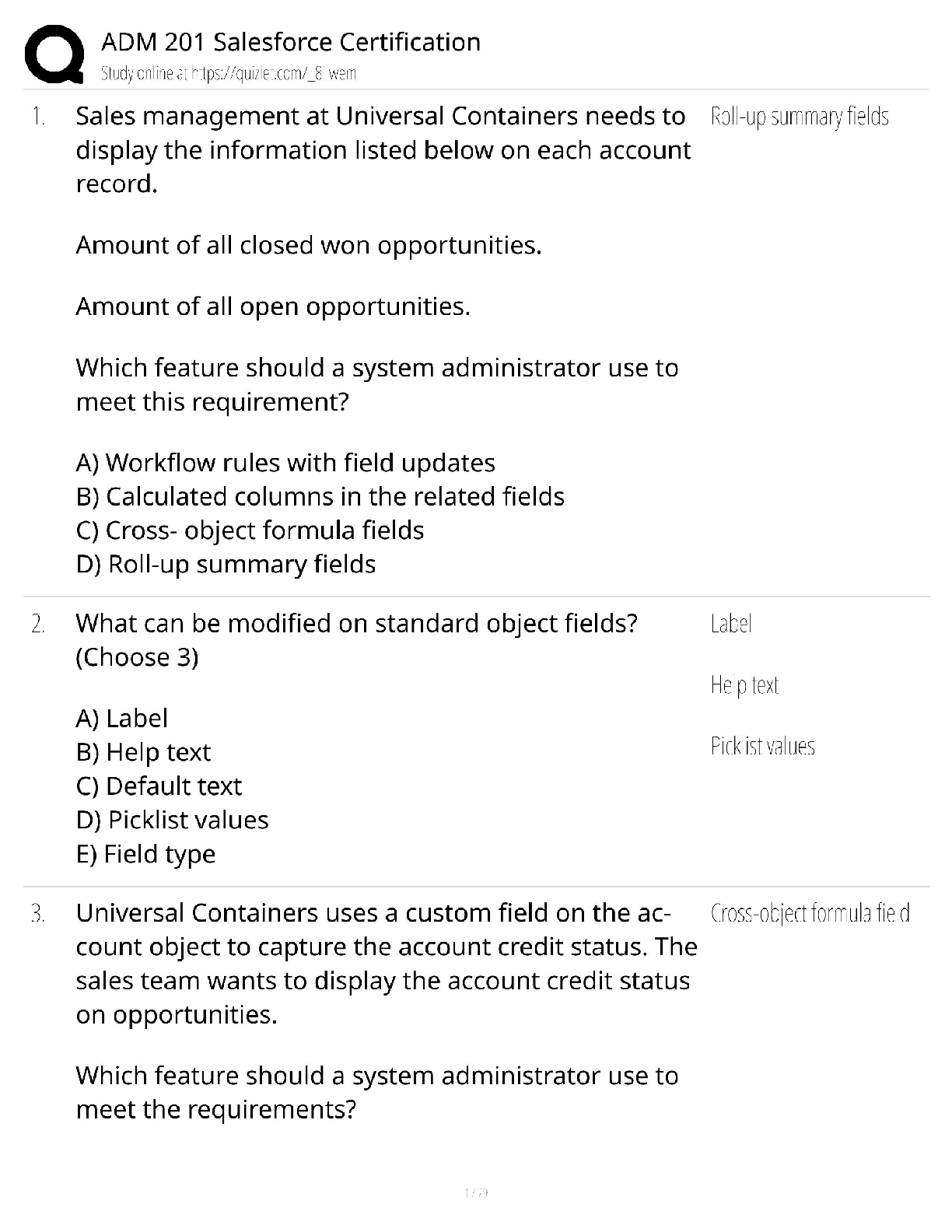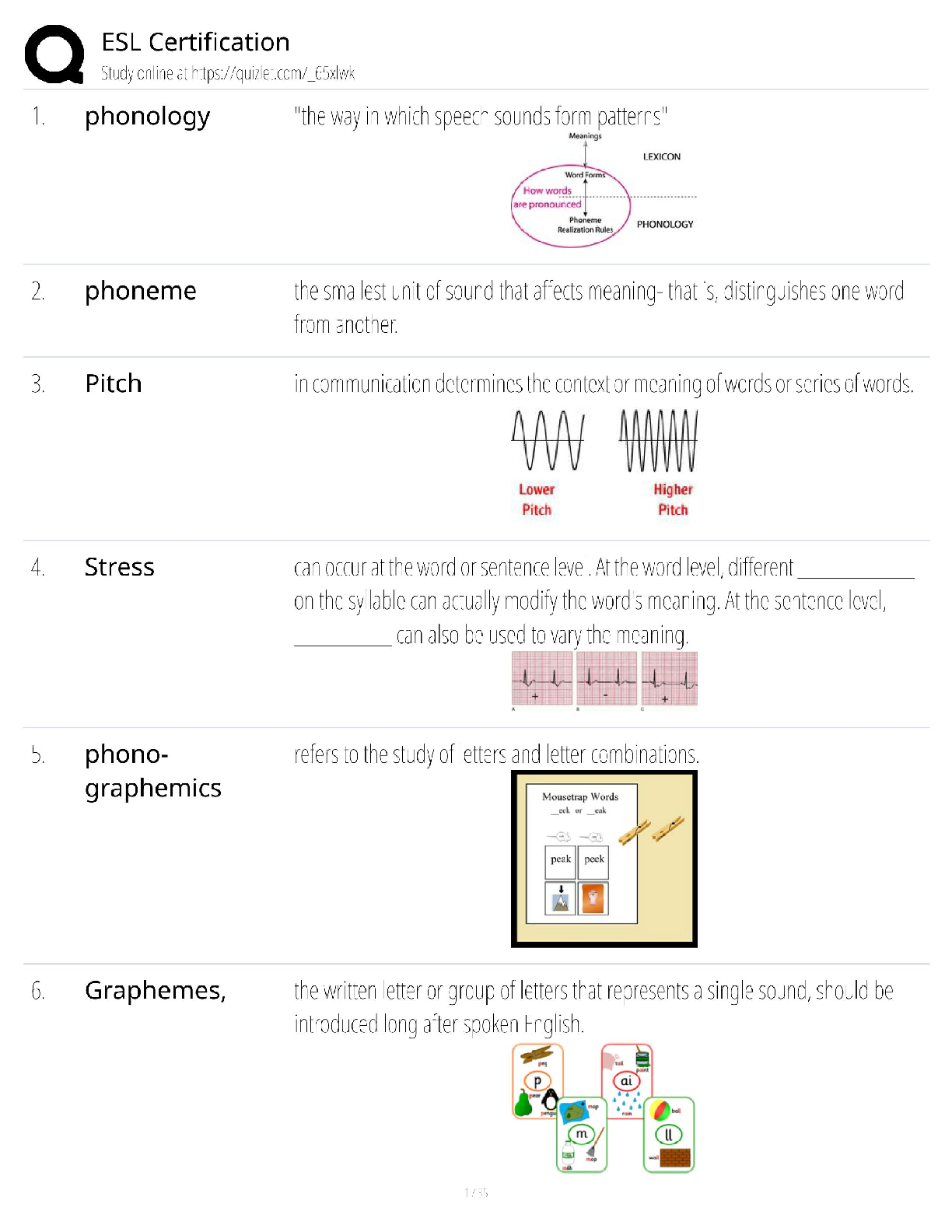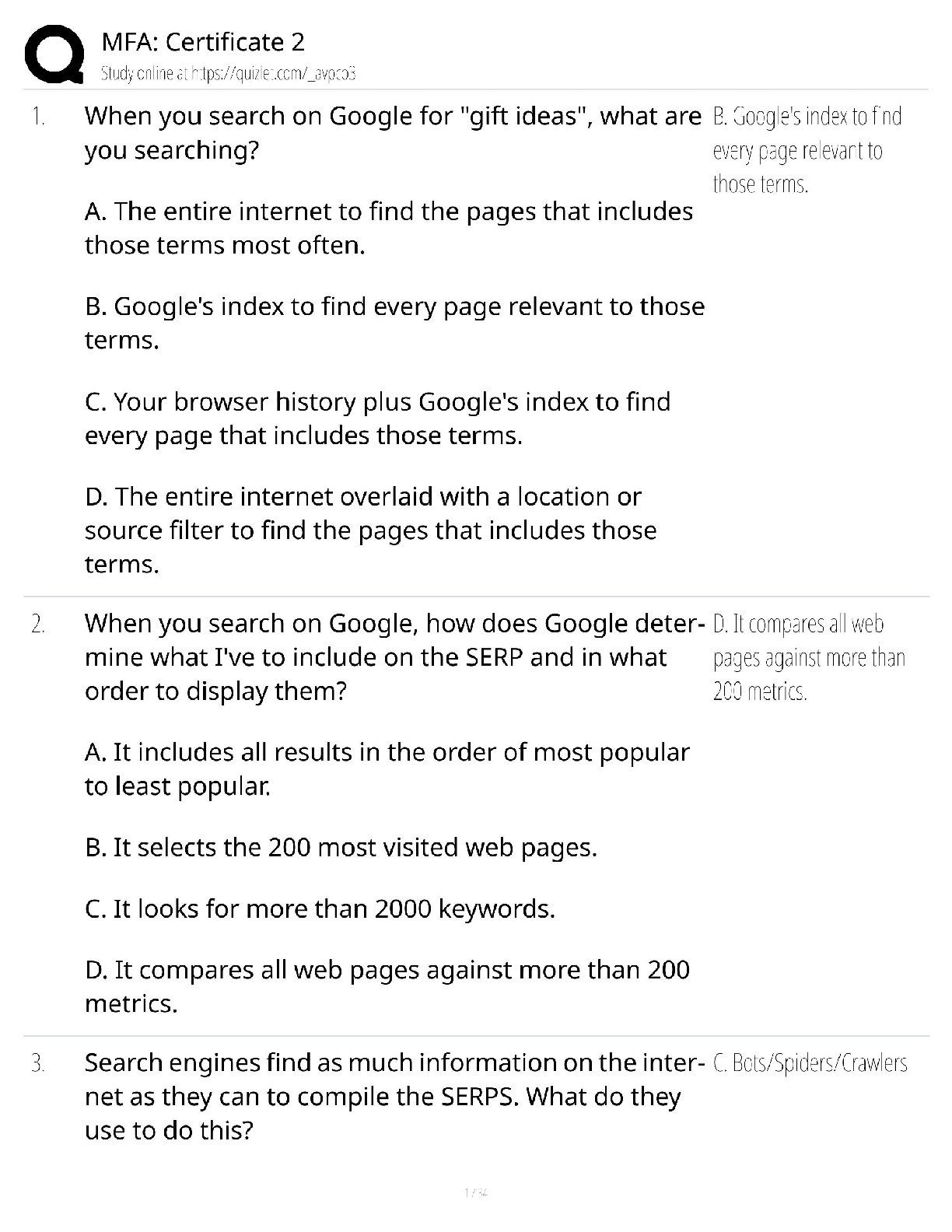Engineering > QUESTIONS & ANSWERS > NETA Group Exercise Certification, Questions and answers, 100% Accurate, rated A+ (All)
NETA Group Exercise Certification, Questions and answers, 100% Accurate, rated A+
Document Content and Description Below
NETA Group Exercise Certification, Questions and answers, 100% Accurate, rated A+ 5 roles of fitness professional - ✔✔--coach -instructor -role model -leader -facilitator 5 ideal qualiti ... es and characteristics of fitness professional - ✔✔--empathy -life-long learner -enthusiasm -genuineness -respectfulness code of ethics (12) - ✔✔--respect rights, welfare, privacy and dignity of clients/coworkers/public -provide and maintain safe/effective environment -fair, equal and reasonable treatment of all -respect/maintain confidentiality of client info -do not diagnose and refer to more qualified prof -establish and practice professional boundaries -recognize and abide by scope of practice -strive to remain current on research through continuing education, conferences, home study and networking -represent credentials/certs in honest, accurate and appropriate -comply with all laws -avoid behavior that could be construed as conflict of interest -protect public from misrepresentations of health and fitness professionals NETA Group Exercise Cert is valid for how many years? - ✔✔-2 How to renew cert? - ✔✔--complete 20 continuing education credits over that 2 year period -of those 20 CECs, 6 must be from NETA -have valid CPR cert 6 tips to evaluate credibility of health and fitness info - ✔✔--source: .edu, .gov, .org; be cautious of .com b/c commercial -review: peer review or panel? reputable publications must receive approval -author:credeintaled? expertise consistent of topic? conflicts of interest? -references: provided? source of info credible? info based on research facts, evidence? -facts: presented biasly? info plausible? be skeptical of ideas that deviate radically from accepted principles -date: when published? current or outdated? seek updated versions What percentage of a message may be attributed to the following elements? What you say, how you say it, body language. - ✔✔-7%-what you say, 38% how you say it 55% body language closed-ended question - ✔✔-require brief responses such as yes or no; used when seeking factual or objective info open-ended question - ✔✔-uncover more subjective and emotionally-based info (opinions, feelings, beliefs) 6 different active listening skills (and define) - ✔✔--paraphrasing: restating using similar words/phrase arrangement -reflecting: stating what you heard with your own words/structure/assumption of underlying meaning -repeating: restating exactly the same words -summarizing: stating key points in long thought/convo; used to close convo or transition -minimal encouragers: words/short phrases to encourage the speaker to continue -questioning: gather info using both open and closed-ended questions 5 levels of transtheoretical model - ✔✔--precontemplation -contemplation -preparing -action -maintenance precontemplation (stage of transtheoretical model) - ✔✔-not thinking of habit change in foreseeable future; no perceived problem with current ways; often defensive contemplation (stage of transtheoretical model) - ✔✔-intentions of habit change, growing awareness of advantages, but offset by perceived disadvantages and barriers; contradicting desires "I may" preparing (stage of transtheoretical model) - ✔✔-intentions of habit change within next month; sporadic leisure-time physical activity; "I will" action (stage of transtheoretical model) - ✔✔-performing regular activity; "I am" maintenance (stage of transtheoretical model) - ✔✔-sustained habit for 6 consecutive months, benefits fuel motivation; "I still am" self-efficacy - ✔✔-situational or task-specific self-confidence 4 factors that may influence an individual's self-efficacy - ✔✔--past performance accomplishments (perception of success related to previously performed similar activities as targeted behavior) -mastery experiences (small achievements made in recent past/present that contribute to SE of target behavior) -social modeling/vicarious experiences (observation of behavior/accomplishment of other individuals-- similar to targeted behavior) -social persuasion (verbal statements of encouragement, affirmation, positive reinforcement) SMART stands for - ✔✔-Specific Measurable Attainable Realistic Time-bound action-oriented goal - ✔✔-process and performance goals, short-term, focus on steps/actions to achieve desired outcome outcome-oriented goal - ✔✔-long-term, related to outcome or result of consistent action/behaviors two types of motivation - ✔✔-intrinsic and extrinsic intrinsic motivation - ✔✔-originates internally for inherent pleasure, satisfaction, personal challenge extrinsic motivation - ✔✔-driven by external factors like money incentives, awards, competition or approval 4 strategies that may be used to increase an individual's motivation and adherence to an exercise program - ✔✔--enjoyable activities: more fun=more motivated -social support: connections within the club, at home, socially -availability/convenience: flexibility in scheduling and variety of classes, onsite childcare -emphasize health benefits over appearance: a self-esteem, experience satisfaction Describe anatomical position - ✔✔-body erect, feet hip-width apart, toes forward, arms hang to side, palms forward, head and eyes looking forward front of the body - ✔✔-anterior back of the body - ✔✔-posterior body part locate closer to head or further from feet relative to another body part - ✔✔-superior body part located further from head or closer to feet relative to another body part - ✔✔-inferior body part located closer to midline of body - ✔✔-medial body part located further from midline of body - ✔✔-lateral ________________plane divides body horizontally into upper and lower segments - ✔✔-medial __________________plane divides body vertically into right and left sides - ✔✔-median or midline _________________plane divides body vertically into the anterior and posterior aspects - ✔✔-frontal 4 major function sof skeletal system - ✔✔--protect organs -support for posture -produce movement in conjunction with muscles -storage for minerals and produce blood cells how many bones are part of axial skeleton? - ✔✔-80 what are four parts of skeletal system that are included in axial skeleton? - ✔✔--skull -spinal column -sternum -ribs appendicular skeleton consists of how many bones? - ✔✔-126 What are 4 bone areas that are considered part of appendicular skeleton - ✔✔--upper and lower extremities -shoulder & pelvic girdle be able to label bones on illustration (17) - ✔✔- 5 segments of spinal column from superior to inferior (how many vertebrae in each) - ✔✔--cervical (7) -thoracic (12) -lumbar (5) -sacrum (5)-fused -coccyx (4)-fused 3 types of muscle tissues - ✔✔--cardiac: compromised wall of heart -smooth: serve to move food through digestion and blood through, line internal organs and blood vessel walls -skeletal:voluntary, most common be able to label muscle illustration - ✔✔- phase of isotonic muscle action during which muscle shortens is called - ✔✔-concentric phase lengthening of a muscle against an external load is called - ✔✔-eccentric prime mover of shoulder joint during bench press is - ✔✔-pectoral agonist muscle prime mover of elbow joint during bench press is - ✔✔-tricep synergist muscle anterior deltoid functions as a _________________ at shoulder joint during bench press - ✔✔-synergist _________________functions as an antagonist at the elbow j [Show More]
Last updated: 2 years ago
Preview 1 out of 34 pages

Buy this document to get the full access instantly
Instant Download Access after purchase
Buy NowInstant download
We Accept:

Also available in bundle (1)
Click Below to Access Bundle(s)
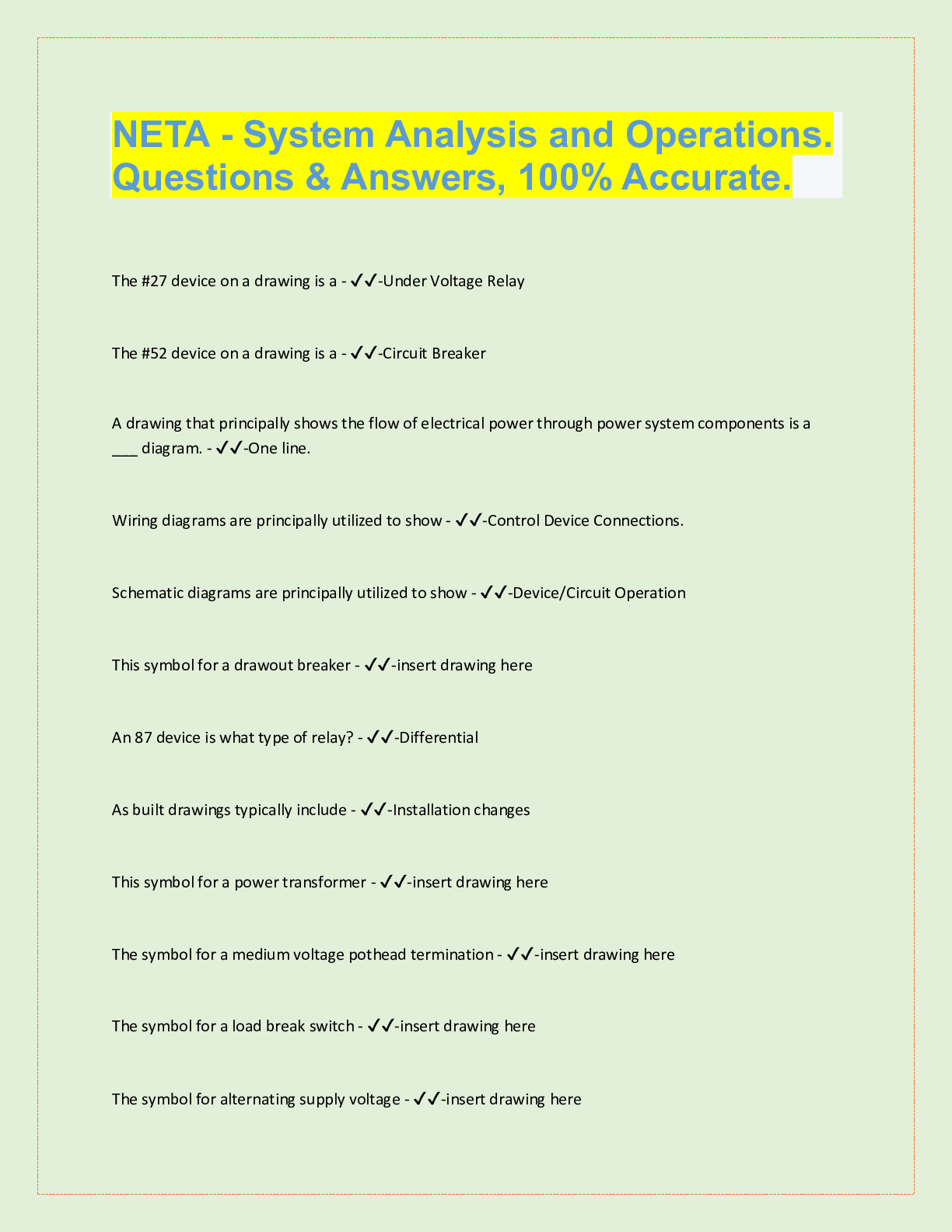
NETA EXAM Practice BUNDLE, VERIFIED.
NETA Practice test questions & Answers, 100% Accurate, rated A+. 19 VERSIONS. FULL CEOVERAGE, RATED A+
By Topmark 2 years ago
$38
19
Reviews( 0 )
$12.00
Can't find what you want? Try our AI powered Search
Document information
Connected school, study & course
About the document
Uploaded On
Mar 13, 2023
Number of pages
34
Written in
All
Additional information
This document has been written for:
Uploaded
Mar 13, 2023
Downloads
0
Views
148

